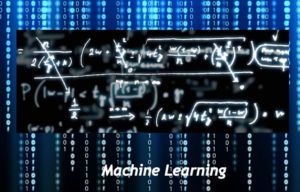by Bhagvan Kommadi
The topic which will be presented by Bhagvan Kommadi at the August eSummit (register here) is Customer Churn Prevention – Beyond The Obvious. The presentation is on Wednesday, August 17, 2016, 9 A.M. CST.
Businesses in the consumer market and in all enterprise sectors have to deal with excessive churn and influences their policy decisions. The traditional solution is to predict high-propensity  churners and address their needs via a concierge service, marketing campaigns, or by applying special dispensations. There are new approaches which vary from industry to industry and even from a particular consumer cluster to another within one industry. Customer churn is calculated by taking all the customers you lose during a time frame, such as a month, dividing it by the total number of customers you had at the beginning of the month and do not include any new sales from that month. Revenue of a company is impacted by the customer churn.
churners and address their needs via a concierge service, marketing campaigns, or by applying special dispensations. There are new approaches which vary from industry to industry and even from a particular consumer cluster to another within one industry. Customer churn is calculated by taking all the customers you lose during a time frame, such as a month, dividing it by the total number of customers you had at the beginning of the month and do not include any new sales from that month. Revenue of a company is impacted by the customer churn.
The primary goal of churn analysis is to identify those customers who are most likely to discontinue using a service or product. Many companies in various industry verticals are progressively providing products and services with similar features. Hence the cost of acquiring a new customer exceeds the cost of retaining a current customer. Customer Retention is most of the time the primary goal of the company. Customers generally tend to stay with a company for a longer term and churning could lead to substantial revenue loss.
Focusing on brand and differentiating relevant to consumers can reduce churn. Brand loyalty is a major goal of enterprises. Loyal customer is a brand’s greatest asset worth more than the brand switcher, both in terms of the premium prices and the marketer’s ability to maintain a stable sales base. Marketers assume that an unchanging share of market implies stability in consumers’ brand purchasing habits. Customer Loyalty is measured by membership status. Platinum, Gold, Silver and Bronze are the levels of the customer loyalty program. Using the historical customer behavior, Gold members moving to Platinum can be predicted. Similarly Bronze to Silver and Silver to Gold can be predicted using customer’s behavior. The campaigns and offers are targeted for  loyal customers. Customer profiles are used for analyzing customer behavior based on various factors.
loyal customers. Customer profiles are used for analyzing customer behavior based on various factors.
Machine learning is artificial intelligence based approach that provides computers with the ability to learn without being explicitly programmed. Machine learning emphasizes on the development of computer programs that can teach themselves to grow and change when exposed to new data. The process of machine learning uses the data to detect patterns in data and adjust program actions accordingly. Machine learning algorithms are often categorized as being supervised or unsupervised. Supervised algorithms can apply on past data learned. Unsupervised algorithms draw inferences from the datasets.
Machine learning systems are made up of Model, Parameters and Learner. Model is the system that makes predictions or identifications. Parameters are the signals or factors used by the model to  form its decisions. Learner is the system that adjusts the parameters and in turn the model by analyzing at differences in predictions versus actual outcome.
form its decisions. Learner is the system that adjusts the parameters and in turn the model by analyzing at differences in predictions versus actual outcome.
Learning consists of three components. The components are Representation, Evaluation and Optimization. Representation is a classifier must be represented in some formal language that the computer can handle. The set of classifiers used for learning is called the hypothesis space of the learner. If a classifier is not in the hypothesis space, it cannot be learned. Evaluation function is also called objective function or scoring function. This function is needed to distinguish good classifiers from bad ones. The evaluation function used internally by the algorithm may differ from the external one that we want the classifier to optimize.
Optimization is a method to search among the classifiers in the language for the highest-scoring one. The choice of optimization technique is key to the efficiency of the learner, and also helps determine the classifier produced if the evaluation function has more than one optimum. It is common to start out using off-the-shelf optimizers, which are later replaced by custom-designed ones.
Churn prediction is based on machine learning by predicting whether a customer is going to leave in a given period. The factors used for analysis are related to the basic information about the customer like age, income, house value and college education. The characterizations of the customer’s interactions with customer support used for analysis are number of interactions, topics of questions asked and satisfaction ratings.
The characterizations of the customer’s usage of the service are also accounted for analysis. This methodology scores every customer with the probability of churn. The top customers will be with higher probability of churn. Businesses need to take into account risk, risk tolerance, the level of the intervention and plausible customer segmentation. The important metric considered in churn is the misclassification rate. Misclassification rate is related to the top customers predicted by the classifier who did not leave and yet received special treatment . The goal is to reduce the customer churn special treatment by improving the accuracy of the prediction.
The marketer has to know exactly what marketing action to run on each individual customer identified as part of churn analysis. This is to maximize the chances of customer retention. Different customers exhibit different behaviors and preferences. Different customers churn for different reasons. In this case targeted proactive retention is used. Targeted proactive retention is knowing in advance which marketing action will be the most effective for each and every customer.
Author’s Bio
 Bhagvan Kommadi, Founder, Architect Corner has around 20 years experience spanning in the creation of products & incubation of Product Startups. Bhagvan Kommadi is currently working as Rapporteur of the Smart City Governance Working Group from Architect Corner. Architect Corner is part of Digital India initiative. He is part of Ask Mentor Board mentoring startups for NASSCOM 10000 startups initiative. He has done Masters in Industrial Systems Engineering at Georgia Institute of Technology (1997) and Bachelors in Aerospace Engineering from Indian Institute of Technology, Madras (1993).
Bhagvan Kommadi, Founder, Architect Corner has around 20 years experience spanning in the creation of products & incubation of Product Startups. Bhagvan Kommadi is currently working as Rapporteur of the Smart City Governance Working Group from Architect Corner. Architect Corner is part of Digital India initiative. He is part of Ask Mentor Board mentoring startups for NASSCOM 10000 startups initiative. He has done Masters in Industrial Systems Engineering at Georgia Institute of Technology (1997) and Bachelors in Aerospace Engineering from Indian Institute of Technology, Madras (1993).







